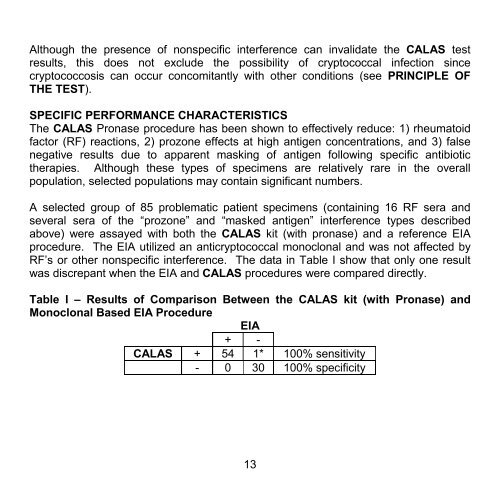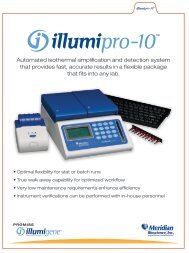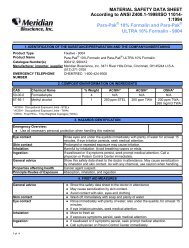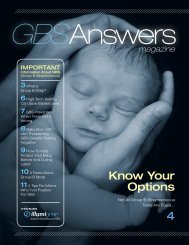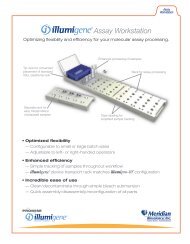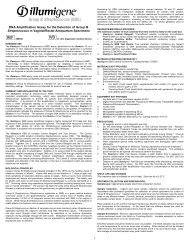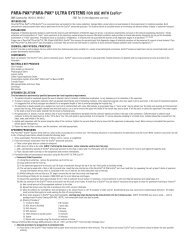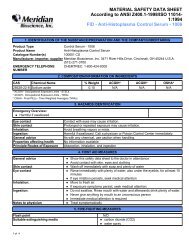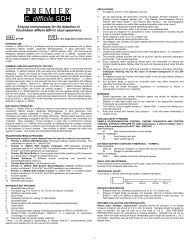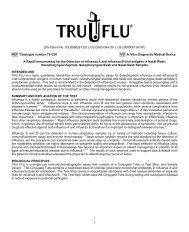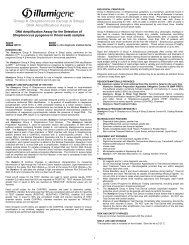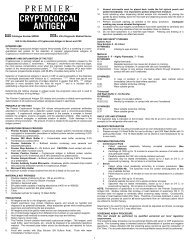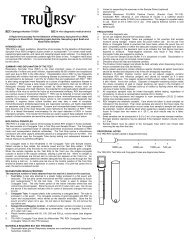Cryptococcal Antigen Latex Agglutination System (CALAS®)
Cryptococcal Antigen Latex Agglutination System (CALAS®)
Cryptococcal Antigen Latex Agglutination System (CALAS®)
You also want an ePaper? Increase the reach of your titles
YUMPU automatically turns print PDFs into web optimized ePapers that Google loves.
Although the presence of nonspecific interference can invalidate the CALAS test<br />
results, this does not exclude the possibility of cryptococcal infection since<br />
cryptococcosis can occur concomitantly with other conditions (see PRINCIPLE OF<br />
THE TEST).<br />
SPECIFIC PERFORMANCE CHARACTERISTICS<br />
The CALAS Pronase procedure has been shown to effectively reduce: 1) rheumatoid<br />
factor (RF) reactions, 2) prozone effects at high antigen concentrations, and 3) false<br />
negative results due to apparent masking of antigen following specific antibiotic<br />
therapies. Although these types of specimens are relatively rare in the overall<br />
population, selected populations may contain significant numbers.<br />
A selected group of 85 problematic patient specimens (containing 16 RF sera and<br />
several sera of the “prozone” and “masked antigen” interference types described<br />
above) were assayed with both the CALAS kit (with pronase) and a reference EIA<br />
procedure. The EIA utilized an anticryptococcal monoclonal and was not affected by<br />
RF’s or other nonspecific interference. The data in Table I show that only one result<br />
was discrepant when the EIA and CALAS procedures were compared directly.<br />
Table I – Results of Comparison Between the CALAS kit (with Pronase) and<br />
Monoclonal Based EIA Procedure<br />
EIA<br />
+ -<br />
CALAS + 54 1* 100% sensitivity<br />
- 0 30 100% specificity<br />
13


